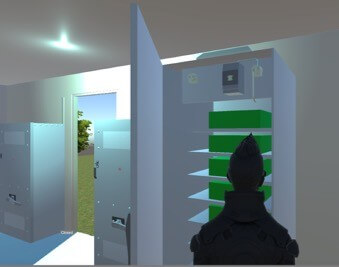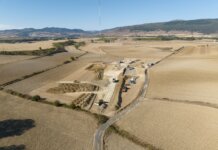Penn State says it is working to advance wind and solar energy through a program offering education and training for energy storage and microgrid systems.
The Energy Storage and Microgrid Training and Certification (ESAM-TAC) program is part of the GridSTAR Center, a smart grid education and research facility at Penn State at The Navy Yard, located in Philadelphia.
According to the university, the large-scale deployment of microgrids and energy storage will require a new approach to how electricity is generated and managed and will include the increased use of batteries and other forms of energy storage.
“A common criticism of renewable energy is that it varies with sun and wind conditions,” says David Riley, a professor of architectural engineering and the director of the GridSTAR Center and ESAM-TAC program. “The electric grid was not built to handle the variable energy created by wind and solar. Smart technologies and batteries can act like shock absorbers on the grid while also improving the economic performance of solar and wind farms.”
Another challenge facing the broad deployment of renewable energy is the lack of a workforce needed to make it happen, according to Penn State.
“The development of new technologies is important, but we have economically viable storage and renewable energy systems already,” Riley continues. “We also need to skill up if we are going design and build energy storage and microgrid systems. The ESAM-TAC program is helping us gain the capability to teach students, engineering professionals and electrical workers what they will need to know to make energy storage affordable and reliable.”
In the last year, five workshops have been conducted by ESAM-TAC partners in Philadelphia, Ann Arbor, Detroit and Los Angeles to help instructors prepare to teach electrical workers about safe and productive energy storage and microgrid construction. Penn State says these instructors will be among the first to implement the ESAM-TAC curriculum and certification program at their institutions.
According to the university, a unique element of the ESAM-TAC program is that the curriculum is based on lessons learned in the design and construction of multiple energy storage and microgrid systems at Penn State’s GridSTAR Center. These systems include microgrid technologies for homes, buildings and electric vehicles.
The project also includes the design of hands-on training equipment, coupled with virtual-reality training tools.
“The hands-on piece allows participants to demonstrate the unique skills and readiness needed to safely build high-voltage DC systems,” Riley adds. “The virtual training enables us to expose students to simulated microgrid and energy storage systems that would be expensive to create in real life, as well as potentially hazardous.”
The ESAM-TAC program is funded through the National Science Foundation’s Advanced Training and Education program, as well as from contributions from the National Electrical Contracting Association, the International Brotherhood of Electrical Workers and the electric training ALLIANCE.




